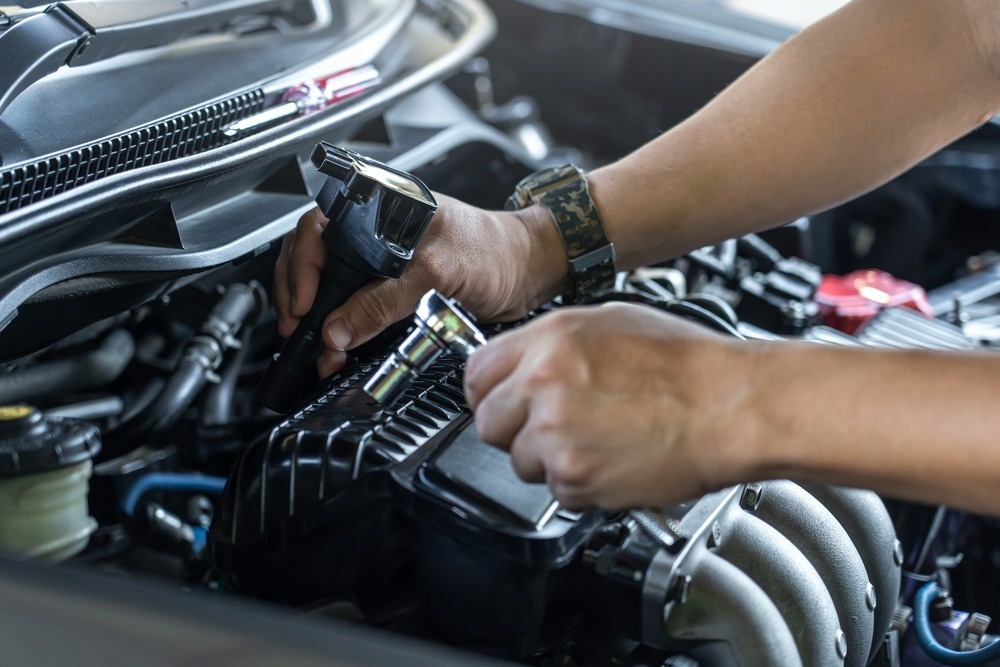Writing in the journal Energies, scientists from the University of Kansas in the USA have investigated fuel injection strategies for improved compression ignition engines.

Study: Multiple Fuel Injection Strategies for Compression Ignition Engines. Image Credit: NONGASIMO/Shutterstock.com
Compression Injection Engines
Compression injection engines are widely used in the vehicle industry to deliver the necessary power for transportation. In these engines, fuel is directly injected into the cylinders which then auto-ignite.
Diesel and biodiesel mixtures, which are used in these engines, are non-volatile and viscous, which results in a heterogenous fuel/air mixture within the cylinders. Another key issue with these engine variants is the emission of harmful gases.
Conventional compression injection engines can suffer from performance issues as well, and early variants which used mechanical pump-line-nozzle systems have problems with reducing stratification. Consequently, the pressure was limited to between 200 and 300 bar. Advances were made using piezoelectric fuel injectors, increasing pressures in injection systems to a maximum of 2500 bar.
Improvements in compression injection engines enhanced the homogeneity of fuel mixtures, thereby reducing emissions and stratification. Moreover, multiple fuel injection events were enabled, more power was generated, and fuel consumption was lower.
Multiple Fuel Injection and Emissions
Whilst multiple fuel injection events improve the efficiency of compression injection engines, the main motivation in this research area is to reduce the amount of harmful emissions.
Exhaust emissions include carbon monoxide (CO,) hydrocarbons, NOx, and particulate matter (PM.) These harmful gases drive climate change, cause pollution, and can severely impact the health of urban populations.
Hydrocarbons and CO are products of incomplete combustion due to heterogenous fuel/air mixtures and low combustion temperature and can be emitted during cold start events. NOx forms at high temperatures in the presence of excess air. PM, which includes soot, is the result of incomplete combustion and the presence of small, partially combusted particles.
Understanding how these pollutants form is crucial for the design of efficient multiple injection systems to mitigate their formation and the harmful effects of vehicle emissions. Reducing both PM and NOx simultaneously is problematic, however. For instance, reducing combustion temperature reduces NOX but increases PM emissions and vice versa.
Types of Multiple Fuel Injection Strategy
In a multiple fuel injection approach, as the name suggests, multiple fuel injections are performed per engine cycle to improve the efficiency of engines and reduce emissions. In the current literature, there is no standardized language to describe these events.
Three methods are employed in multiple fuel injections: pilot injection schemes, split injection, and low-temperature combustion. Research has been conducted into early and post-injection strategies. Pilot injection schemes, for instance, can simultaneously reduce smoke and NOx under consistent fuel consumption conditions. Research has advanced significantly over the past few decades.
The Study
The new paper in Energies has provided a comprehensive literature review from the past few decades on advances in multiple fuel injection strategies. Several studies have reported good increases in engine efficiency and reduced emissions, with various strategies demonstrating different results.
Whilst there has been significant research into multiple fuel injection strategies for conventional hydrocarbon-derived fossil fuels, the authors have noted that there is a lack of study on strategies for biodiesel mixtures. The earliest work on this area of research is from the late 1990s, and only four types of biodiesel stock have been studied. These are waste cooking oil, soybean oil, coconut oil, and Karanja oil.
Biodiesel is important as it has been widely touted as a potential solution to the problems faced by conventional hydrocarbon-based diesel fuels. This type of fuel reduces emissions whilst ensuring that engine efficiency is comparable. The authors have highlighted research that has demonstrated that using multiple fuel injection events with biodiesel is comparable to or exceeds conventional fuels in terms of efficiency.
The main aim of the research is to review and investigate multiple fuel strategies for conventional compression injection. However, there has been some focus in the paper on low-temperature combustion. This type of combustion strategy achieves near-constant combustion and significantly reduces PM and NOx emissions.
A particular note has been made in the study by the authors on the efficaciousness of a combined pilot injection/post injection strategy. Several studies have unanimously agreed that this combined multiple fuel injection strategy is the most beneficial for efficient and clean engine design.
In addition, the authors have noted that pilot injections operate optimally under low pressures, with post-injection strategies working best under high pressure. Due to the differences and advantages of each strategy, a hybrid approach could be optimal for both diesel and biodiesel blends.
By providing a thorough review of current literature and developments, the new paper in Energies provides future researchers in this field with a comprehensive knowledge base and guidance to help improve the efficiency and reduce the polluting effects of compression injection engines.
More from AZoM: Reflection Electron Microscopy for Crystal Analysis
Further Reading
Simpson, T & Depcik, C (2022) Multiple Fuel Injection Strategies for Compression Ignition Engines Energies 15(14) 5214 [online] mdpi.com. Available at: https://www.mdpi.com/1996-1073/15/14/5214
Disclaimer: The views expressed here are those of the author expressed in their private capacity and do not necessarily represent the views of AZoM.com Limited T/A AZoNetwork the owner and operator of this website. This disclaimer forms part of the Terms and conditions of use of this website.